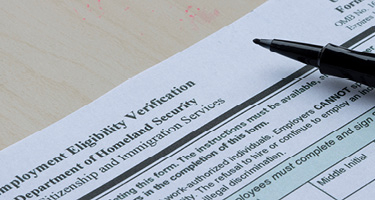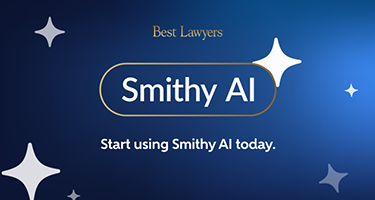On October 13, 2022, the Department of Labor (DOL) published proposed new rules, changing the 2021 Independent Contractor Rules (the 2021 IC Rules). The proposed changes simply revert classification analysis back to the same rules pre-2021. While the proposed rules are not novel, they may create compliance issues for employers under the FLSA and possibly other laws and may require expenditures of higher wages and additional benefits for workers.
The Fair Labor Standards Act, initially enacted in 1938, imposes certain wage, hour and benefits requirements on covered employers. For starters, employers are required to at least pay their nonexempt employees federal minimum wage for every hour worked and one and one-half times the employee’s regular rate of pay for all hours worked beyond 40 hours in a workweek. Other federal and state laws also require provision of unemployment insurance, employment tax contributions and workers’ compensation benefits in the event an employee is injured in the workplace. Independent contractors are not entitled to these various legal benefits.
The DOL contends that many workers are misclassified as independent contractors, thereby depriving them of certain rights they are entitled to under the FLSA. The DOL seeks to correct these misclassifications in the proposed new rules.
Why does this matter? Who the DOL considers an “independent contractor” is about to change, likely entitling “independent contractors” to more wage and hour rights typically reserved for employees.
The Old Rule
For decades, the DOL and courts employed the economic reality test to determine whether a worker should be classified as an employee or an independent contractor under the FLSA. This test sought to determine if the worker was economically dependent on the employer for work (and thus an employee) or if the worker was in business for themselves (and thus an independent contractor). The classic standard was whether the employer had control over the result but not the means by which the worker achieved the result.
The DOL and courts have historically used a “totality of the circumstances” analysis to make this determination—applying equal weight to the following six factors: (1) the opportunity for profit or loss, (2) investment, (3) permanency, (4) the degree of control by the employer over the worker, (5) whether the work is an integral part of the employer’s business and (6) skill and initiative. The factors were adopted from the Supreme Court’s Silk and Rutherford decisions.
The DOL asserts that workers are being misclassified due to the 2021 rule’s focus on only a few factors, as opposed to taking a totality-of-the-circumstances approach."
Things changed in January 2021. The DOL published proposed changes to the rule, altering a decades-old rule. While the 2021 IC rule kept the “economic reality test” moniker and most of the factors, it substantially altered the analysis of those factors. The 2021 IC rule designated two factors—the nature and degree of control over the work and the worker’s opportunity for profit or loss—as “core factors” that are the most probative and carry greater weight in the analysis. The other three factors—the amount of skill required for the work, the degree of permanence of the working relationship and whether the work is part of an integrated unit of production—are less probative non-core factors. The 2021 IC rule also limited consideration of investment and initiative to the opportunity for profit or loss factor and narrowed the consideration of facts like control and whether the work is integral to the employer’s business. The DOL explained that the purpose of the 2021 Rule was to establish a streamlined economic reality test that improved on prior articulations often described as “unclear and unwieldy."
New Proposed Rule
On October 13, 2022, the DOL published proposed rules on “Employee or Independent Contractor Classification Under the Fair Labor Standards Act.” Though deferring to the courts as the final arbiter on the validity of the 2021 IC rule’s analysis and factors, the Department of Labor opined that certain provisions in the 2021 rule are in tension with court precedent, specifically portions of the rule which designate two factors “core factors,” predetermining their weight as “most probative.” The Department argues that “the 2021 IC rule does not comport with the FLSA’s text and purpose as interpreted by courts and departs from decades of case law applying the economic reality test.”
What Is Different in the Proposed Rule?
The DOL proposes rescinding the 2021 rule and returning to the totality-of-the-circumstances analysis of the economic reality test. The proposed rule does not designate any factor as more or less probative, “core” or “non-core,” and does not predetermine the weight given to each factor. Importantly, the DOL proposes to return the consideration of “investment” to a standalone factor and rebirth of the “integral factor analysis,” which considers whether the work is integral to the employer’s business.
How Does This Rule Affect Your Business?
The 2021 rule arguably allowed employers to classify fewer workers as employees. The DOL asserts that workers are being misclassified due to the 2021 rule’s focus on only a few factors, as opposed to taking a totality-of-the-circumstances approach. Considering the proposed rule takes a more inclusive approach, the proposed new rule widens the pool of workers who may be classified as “employees.”
Simply put, workers who were once considered “independent contractors” may now be considered “employees” under the new proposed rules and thus entitled to more benefits.
For FLSA purposes, this change will require that employers provide workers minimum wage and overtime pay. To the extent courts and other agencies follow the DOL approach, employers may be required to provide workers’ compensation, unemployment insurance, family and medical leave and partial contribution to Social Security and Medicare taxes to more workers than in past years.
Employers should consider the following as changes that will result from the new proposed rule:
Business Structure and Finance:
These changes are predicted to have substantial impact on ride-hailing companies, delivery services and other industries that rely heavily on gig workers. Companies like Lyft or Uber have structured their business model to depend heavily on independent contractors’ classification and the business benefits that come with that classification. This new rule may, though not guaranteed, change many of their workers’ classifications from independent contractor to employee, forcing these employers to increase their base pay, pay overtime and offer other benefits discussed above.
FLSA Compliance Issues:
Even if your business is not affected to the extent discussed above, the new proposed rules, once enacted, will almost certainly require an audit of worker classifications. That is, employers will need to consider the classification of independent contractors, conduct an analysis applying the factors under the economic reality test and make adjustments to wages, hours and benefits based on their findings. Depending on the size of your company, this could require significant expense and resources to complete. In addition to potentially paying reclassified “employees” more, your business also will have to follow the FLSA employee recordkeeping requirements with respect to those workers.
Tax Procedure
Worker classification also affects tax procedure, particularly whether the worker completes a 1099 or W-2. The tax designation may require employers to engage in tax withholding procedures (for employees) and other tax implications. Once reclassification occurs, it may be prudent to consult a tax expert for guidance.
Status of the New Rule’s Enactment
After the DOL published the proposed rule, it offered the public an initial 46-day window to offer written comments. The written comment window was extended to December 13, 2022. Once the written comments are submitted, the DOL will review each comment and prepare a finalized rule.
We expect the rule to be finalized in the first quarter of 2023. Whether the rule is enacted then will depend on if it is challenged in the courts.
Adams and Reese LLP is closely monitoring this process and any subsequent litigation.
Scott Hetrick is the Labor and Employment Practice Team Leader at Adams and Reese and a partner in the firm’s Mobile office. Scott is a management rights advocate who represents employers on federal and state labor and employment law compliance and dispute resolution. He also represents insurers with analysis of their defense and coverage obligations under a wide variety of insurance policies, including commercial liability, errors and omissions, property and casualty and liquor liability, in a wide range of third-party claims against their insureds. Scott counsels employers with an eye to preventing claims arising from day-to-day employment decisions, particularly terminations of employees and large-scale layoffs. An important component of his practice involves drafting and revision of employee handbooks, personnel policies and procedures, employment applications, background check disclosure and consent agreements and employment contracts, including non-compete agreements, trade secret agreements and arbitration agreements. Scott speaks frequently on employment law and human resource management issues at seminars for personnel managers and business owners and has published several articles on employment law topics. Scott has been recognized by clients and peers in Best Lawyers® in Employment Law since 2010, including formerly being named “Lawyer of the Year” in Mobile, Alabama in 2019 for Employment Law.
Ray Young, Jr. is an associate in the Adams and Reese Jackson office. He is a litigator practicing across a wide spectrum of areas, including labor and employment, commercial litigation, immigration, insurance defense and coverage, and transportation and logistics. Ray formerly worked as a federal law clerk for the Hon. Sharion Aycock, U.S. District Judge for the Northern District of Mississippi. During this clerkship, Ray garnered the important skills needed to be a successful litigator, and obtained the institutional knowledge necessary to ease the litigation process for his clients. Ray graduated cum laude from Mississippi College School of Law. During law school, Ray was involved in Moot Court, as the Chair of External Affairs, received multiple advocacy honors, including induction into the National Order of Barristers and awards for academic excellence. As an undergraduate student at the University of Southern Mississippi, he completed his Bachelor of Arts degree in Political Science.
































